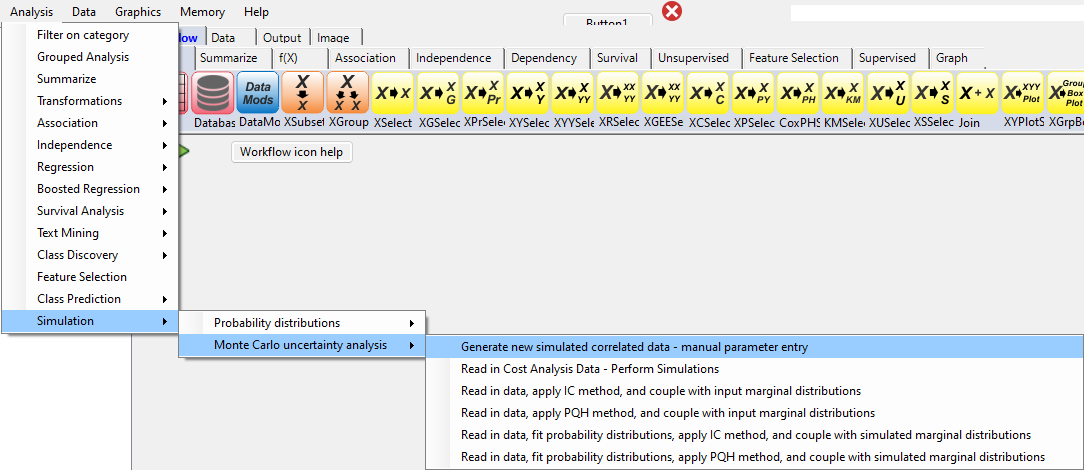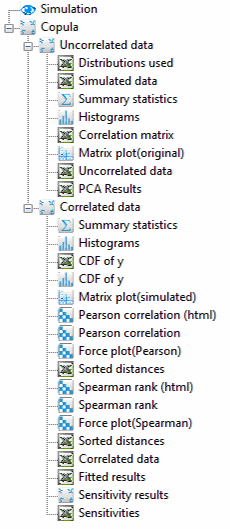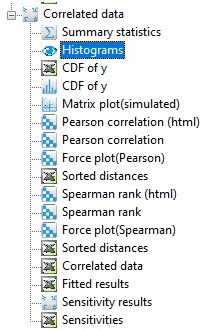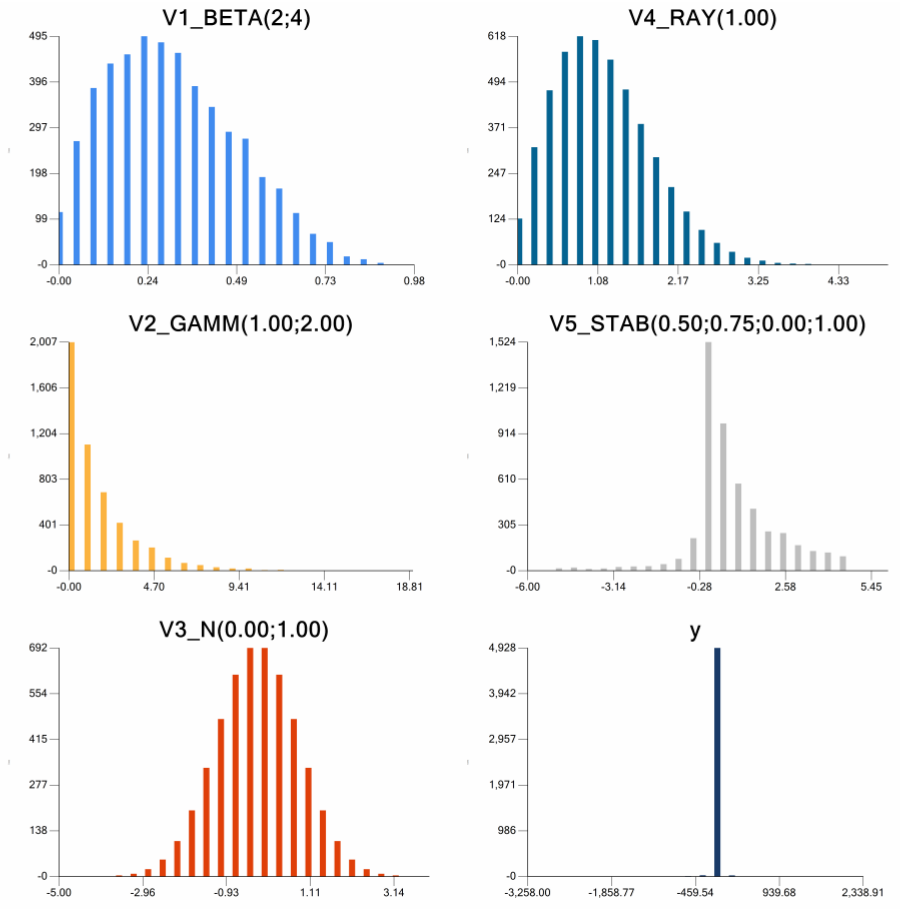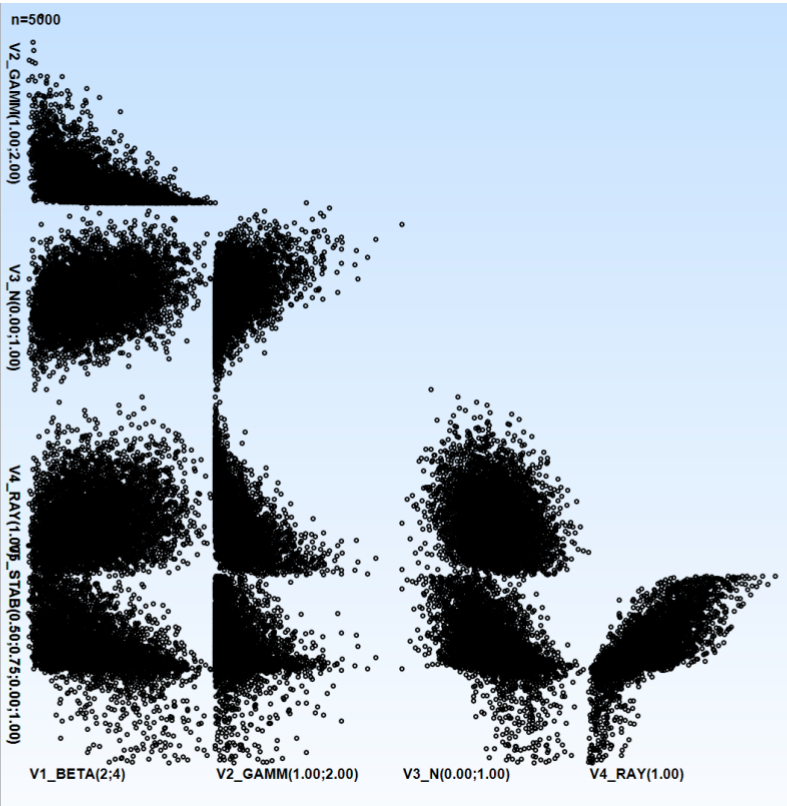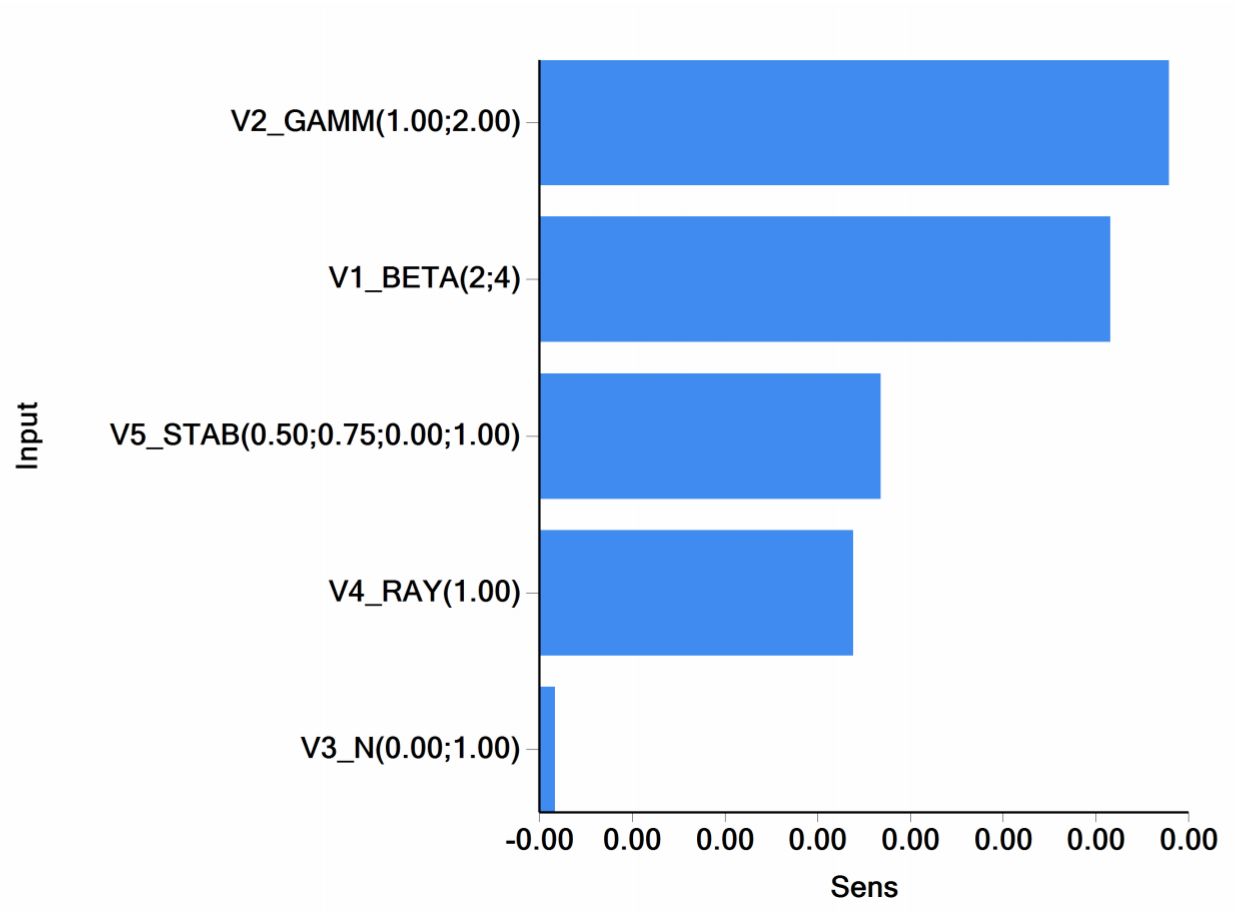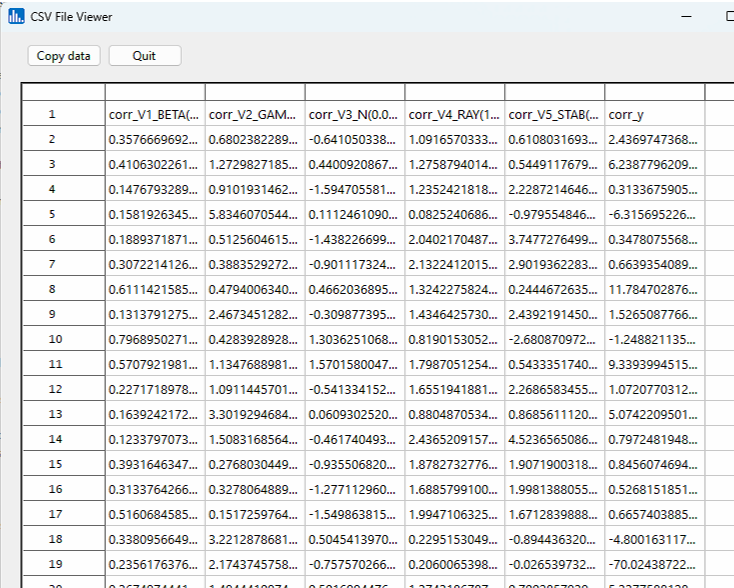Select Simulation, then Monte Carlo uncertainty analysis, then Generate new simulated correlated data - manual parameter entry
For this example, let's use the 5 features that are already present, but select different probability distributions for each on the left side of the input panel.
Thus, for the first feature, select the beta distribution (accept the default parameters), gamma, normal, Rayleigh, and stable -- accepting the default parameters for all distributions. The correlation matrix which is shown (that was randomly generated) will also be used during simulation to ensure the new simulated features are correlated. In addition, the function y = (V1 + V2 + V3 + V4 ) / V5 will be employed to create a new y output feature. In essence, we are mimicking an objective function, i.e., y=f(x), and simulating correlated feature values for input in the function. This will create a new y-feature, which will be provided in the ouput.
The image below shows the pull-down choices for probability distributions which can be used for each simulated feature:
Once the run has completed, you will observe the following output icons:
Select Histograms in the correlated output icons:
The histograms show the distributions of the various simulated features, and provide the parameter values in the titles:
Click on the Matrix plot(simulated) icon and you will see the all possible X-Y scatter plots for all the features:
Click on the Spearman rank icon and notice that the correlation coefficients for the original simulated features (V1-V5) are similar to (but not exactly equal to) the specified input correlation coefficients:
Click on the Sensitivies icon, and you notice in the image that the dependent y-feature was most sensitive to changes on the gamma variate values. In addition, the scale of coefficients was quite small.
If you click on the Correlated data icon, you will see the resulting simulated data, which can be copied and used externally.


